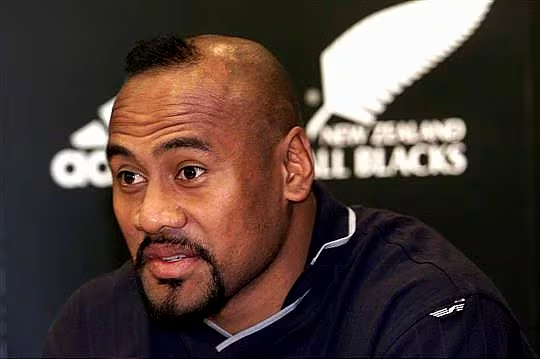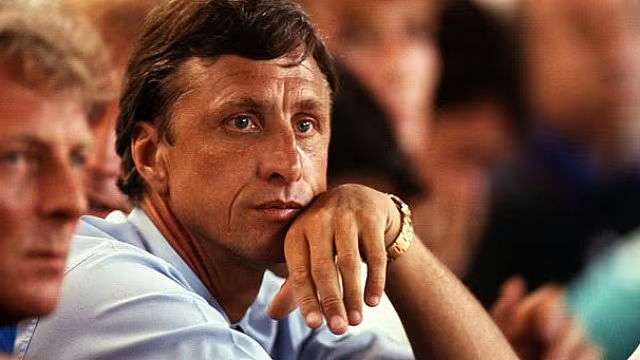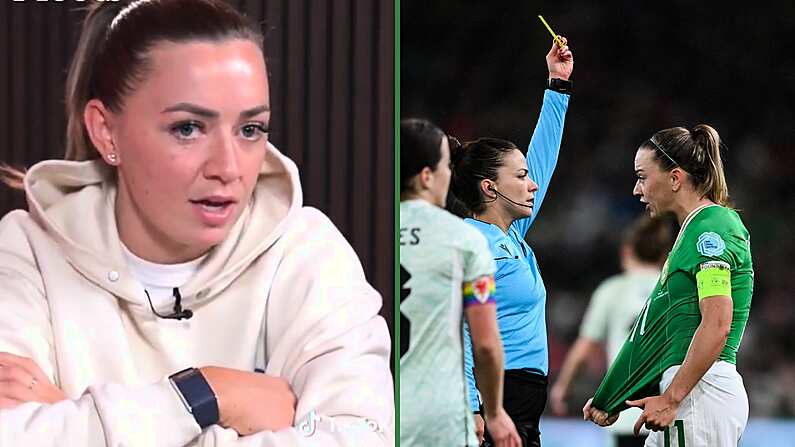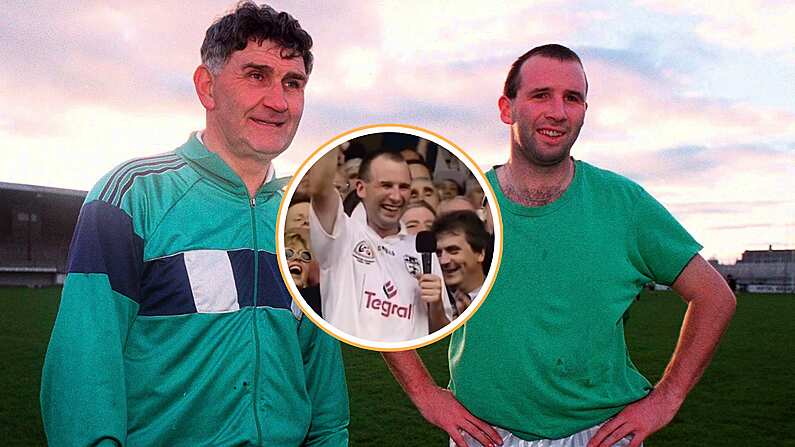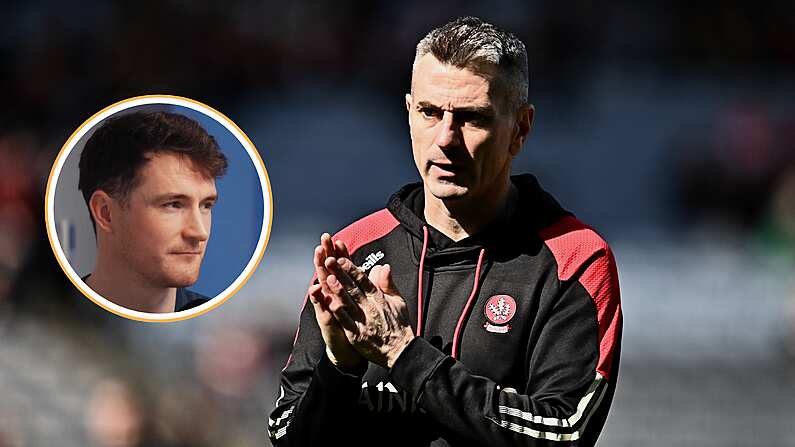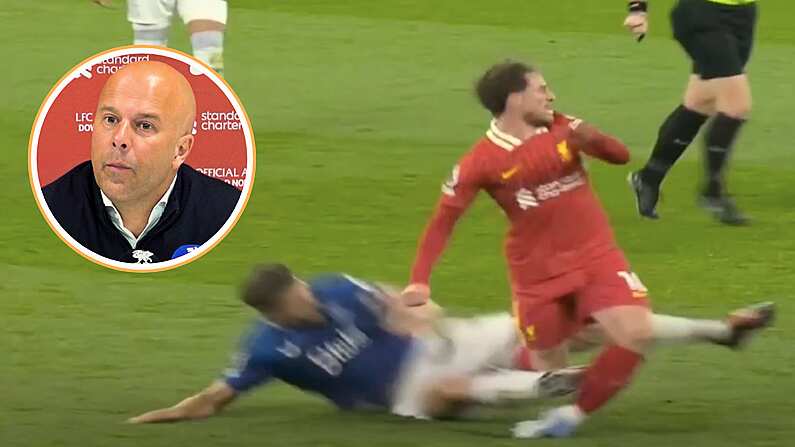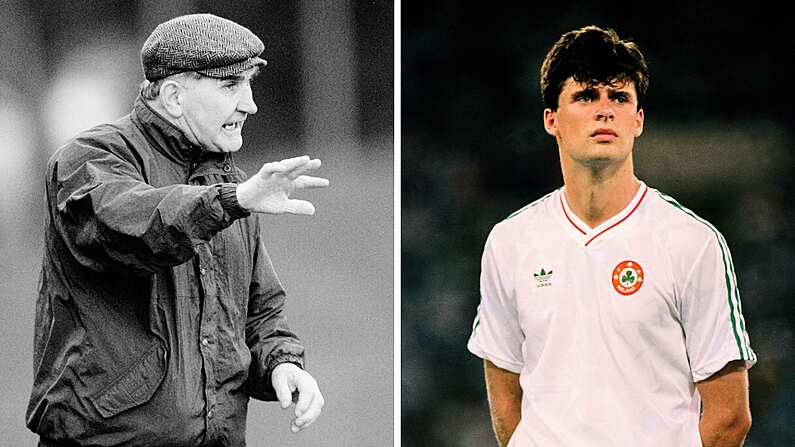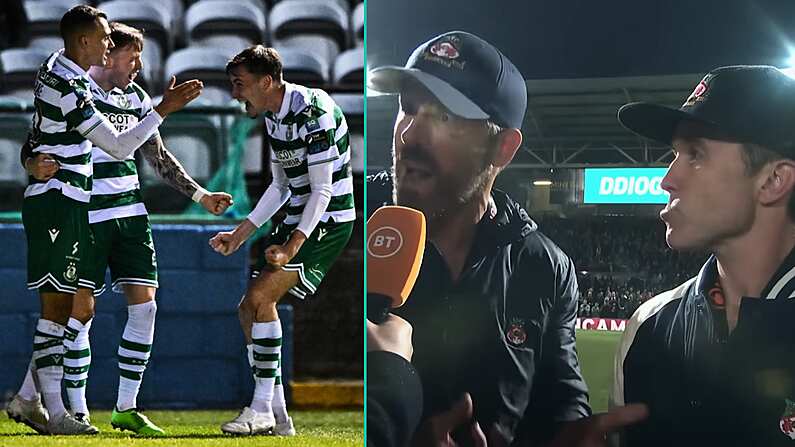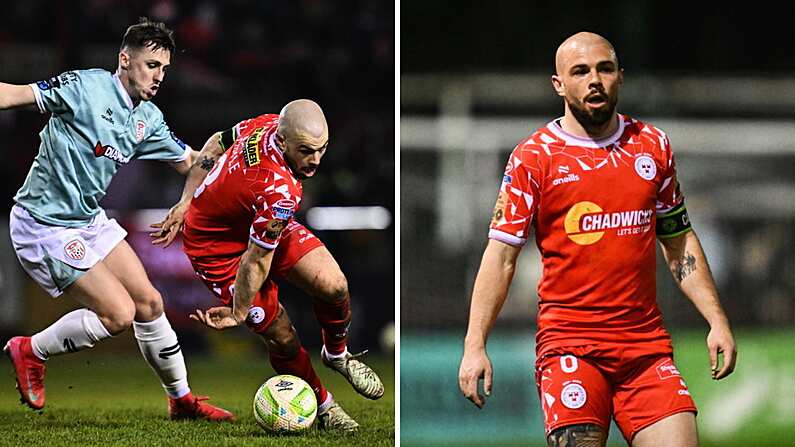The four most important field sports on this island have mutated greatly over the years. They're evolving all the time. Sometimes, they take major evolutionary leaps, helping them become unrecognisable from the sports they once were. Here are some of the men who brought about these leaps, the men who could justly be described as 'fathers of the modern game'.
Jonah Lomu
On the eve of the 1995 Rugby World Cup, the IRFU released a statement reiterating their fanatical commitment to rugby union's amateurism. Rugby, they hoped and believed, would continue to be a game played by men in their leisure time.
Indeed, the IRFU, the most conservative of the northern hemisphere governing bodies, had opposed the establishment of the World Cup in the first place, lest it encourage creeping professionalism. Before the 1987 World Cup in New Zealand, they even had discouraged team training sessions because they didn't want the Irish players taking the competition too seriously.
In the end, team captain Donal Lenihan and a couple of others organised their own sessions in secret before the team flew out.
By the time the third World Cup in South Africa rolled around, and despite the protestations of the northern unions, the writing was on the wall for rugby's amateur status. The word was that Rupert Murdoch was about to finance a breakaway professional rugby league in Australia, a story which dominated the comment pages in the run-up to the World Cup.
In the south, stories abounded of players being paid on the quiet for years. The late 80s and early 90s was known as the 'shamateurism' era.
Even Irish players were getting their hands on some under-the-counter dough. After impressing at the 1987 World Cup, Neil Francis spent a season playing for Manly in the Australian league. Reminiscing on his experiences in a televised interview in the Gasworks Pub a few years back, he said to host Matt Cooper that 'effectively, they paid me'.
Against that backdrop, Ireland met New Zealand in the first game of the competition. After a few relatively mediocre years by their standards, NZ were coming again with a formidable team. They were at the forefront of the new game. Nothing less than winning the whole kaboodle would do. For Ireland, they hoped for a respectable defeat against the All-Blacks but the important game was against Wales in the last pool game. The winner would progress to the last eight. The loser would troop home in ignominy. In the end, Ireland won a miserable game 24-23.
Before that, they received a wholly predictable pasting from New Zealand. The final score was 43-19. There was widespread relief the margin wasn't bigger. The game is remembered partly for Gary Halpin's early try, after which, in a moment of pumped-up exuberance, he gave the All-Black front row the finger.
But it is principally remembered for Jonah Lomu debuting his frightening destructive power on the world stage. Rugby union had never seen anything like it. He ran in two tries against Ireland and bulldozed defenders out of the way with stunning ease.
The morning after Lomu died we talked to Neil Francis about what it is like to play in that game.
He scored two against us that day but it was the one he made for Josh Kronfeld is the one that stands out for me, where he busted through about four or five tackles and Simon Geoghegan nailed him on the line but he just popped it up to Kronfeld who was on his shoulder and he scored in the corner. You're in the middle of an 80 minute test against the All-Blacks and it's rare that you take your eyes off the job in hand or lose any kind of focus but I think all of us were looking at the big screen in Ellis Park in Jo'burg and sort of seeing how many tackles he beat and then the crowd counting them... He was awesome that day.
I walked out of the tunnel and he was right beside me and I thought 'Mother of God'. 6 ft 5, but just his frame and his thighs were enormous. He got on to the ball after two minutes and the speed was just bewildering. He was marking Richie Wallace but a lot of the time Simon (Geoghegan) would come over and make a couple of tackles on him... But his speed and his power and his pickup... From a standing start, he was able to get to max speed in just a very short space of time.
I would have known quite a few of the All-Blacks. Some of them came into our dressing room and some of us went into theirs. And I was sitting with Ian Jones and we were just chatting away. I don't think we were having a pint but we were having a drink of something. I swapped jerseys with Ian Jones and I said, 'do you want to swap nicks?' And he said 'well, I've given them away but the only person who'd fit you would be Jonah'. So, I have his nicks at home because as a 6 ft 7 second row, I was the only guy who'd fit into his nicks. They're in the attic somewhere.
Before Lomu, rugby players tended to more closely resemble normal human beings. Wingers most of all. Now, here was a winger with the power of the most muscular forward you've ever seen.
His signature performance came against Grand Slam holders England in the semi-final. He scored four tries in a performance that left the English players broken, bewildered and borderline appalled. Captain Will Carling was quite incapable of grace after the game, telling reporters 'he's (Lomu) a freak, the sooner he goes away, the better'.
But Jonah Lomu was merely a harbinger of what was to come in rugby's professional era. In 1995, he was a freak. By 2016, his ilk are no longer freaks.
Kevin Heffernan
The cult of the manager didn't really exist in Gaelic football prior to the early 1970s. Who, for instance, was the 'manager' of the Galway three-in-a-row team of the 1960s?
The name of John 'Tull' Dunne has been mentioned but he wasn't really the 'manager' as such, more an influential member of the committee that decided the team selection.
Most GAA encyclopedias, you know, the type that repeatedly use the phrase 'one of the finest exponents', credit Heffo as being the first proper 'manager' in Gaelic football.
Always an innovator, Heffo was the most important forward on the vibrant Dublin side of the 1950s. The old sages of the press box insist that this team were revolutionary in their day. They played a new-fangled running game, with Heffernan playing the role of 'roving full-forward', a position that hadn't existed before he arrived. They won the All-Ireland in 1958.
Heffernan returned to the Dublin fold in late 1973. He insisted that he be allowed to choose his own backroom team, something unheard of at the time. Donal Colfer and Lorcan Redmond joined him on the managerial team.
The 'three wise men' cliche was born. Before that it was more like '12 wise men' or something. And 12 wise men from geographically spaced-out locations too.
Dublin had barely won a match in the previous seven years. Between 1966 and 1973, teams like Longford (x2), Louth, Laois, and Westmeath dumped them out of the championship, usually in front of pitiful crowds.
Men who'd been playing senior football for Dublin for years were anonymities in their own city. Gay O'Driscoll's workmates were totally oblivious to his status as an inter-county footballer.
In executing the most breathtaking and speedy revolution in Gaelic football history, Kevin Heffernan hit upon a very simple plan. He ensured over the winter that Dublin would become the fittest team in Ireland. This, he later recalled pithily, wasn't very hard to do back in 1973-74.
Fitness was especially relevant in the first half of the 1970s, as the GAA were still experimenting with 80-minute games. They had leapt from 60 minutes to 80 minutes at the beginning of the 1970s, before retreating to the happy median of 70 minutes by the late 70s.
Heffo, sensationally, brought the Dubs to All-Irelands in 1974 and 1976, a three year period which revived interest in the game in the capital and attracted a new type of fan to Gaelic Games.
Heffernan resigned abruptly after the 1976 All-Ireland, reasoning that having beaten Kerry in September, there was little left to achieve. Captain and centre-forward Tony Hanahoe became player-manager for 1977. It would be hard to say the team's performance dipped as a result. Quite the opposite, the coasted to the All-Ireland, beating Kerry in a semi-final classic and demolishing Armagh in the All-Ireland final. This fact is often overlooked by subsequent generations who associate Heffernan with all three All-Ireland wins in the 1970s.
To the annoyance of some players, notably David Hickey, Kevin Heffernan simply re-assumed the reins before the 1979 season. The team, however, was breaking up and Offaly sat in the Leinster throne for a few years. Heffernan stuck around, however, rebuilding a side which stole in for an opportunistic All-Ireland in 1983.
Johan Cruyff
Barcelona were always a famous football club, but in success terms, they were firmly in the shade when Johan Cruyff chose to sign for them in 1973. He immediately led them to the La Liga title, their first since the beginning of the 60s. While he won little else there as a player, he returned as manager in the late 1980s.
The second half of the 1980s were tough times for Barcelona fans. El Tel had won them a League title in the middle of the decade but their hopes of a first ever European Cup title were dashed by a penalty shootout loss to the very unglamorous Steaua Bucharest in the final in Seville.
The following season - and this is a point that Eamon Dunphy was keen to stress in an RTE studio many years later - Barcelona were beaten home and away by Dundee United in the UEFA Cup. Republic of Ireland striker Tommy Coyne was the star striker for Jim McLean's doughty band that year.
Venables was fired and replaced by future European championship manager Luis Aragones. He won the Cope del Rey in his sole season there. But Real Madrid still held a vice grip on La Liga.
In desperation, they reached out their 1970s Dutch hero for salvation.
He promptly offloaded fifteen players - including Gary Lineker - and drafted in twelve new players, hungry youngsters like defensive midfielder Eusebio and trusty centre-forwards like Julio Salinas.
Even more significantly, there was a major overhaul in style. Cruyff scrawled his fabled 3-4-3 formation on the blackboard on the first day of training. This was even more cavalier than the 4-3-3 that Rinus Michels employed with Holland in the 1970s.
The team was made to worship the football. Even fitness work was done with the ball at their feet.
The style of play he engendered is still evident in the Barcelona of today. Indeed, the whole complexion of Spanish football has changed. Hard to credit now, but Spain used to be associated with uncomplicated physicality. A quasi-British style of football. Nowadays, they are a byword for artistry and sinuous attacking play.
Managers who usher in major change often experience wobbles early in their reign. Cruyff had a bumpy first couple of seasons.
However, following a very flat 1989-90 season, where he required the casting vote of the President in a board vote of no confidence, his Barcelona team took wing.
They won four La Liga titles on the trot between 1991 and 1994. Sweeter still, two of these arrived via astonishing chokes from Real Madrid on the final day of the season.
In both 1991-92 and 1992-93, table toppers Madrid lost away in Tenerife on the final day, allowing Cruyff's Barca to leapfrog them.
In 1992, Cruyff guided Barcelona to their first ever European Cup title. An extra-time free-kick from Ronald Koeman beat Sampdoria 1-0 at Wembley. Two years later, they reached the European Cup final again. Milan were the opponents and a titanic battle between two giants of European football was anticipated. However, Barca were humbled 4-0, with all the goals scored inside an hour.
Within a couple of seasons, he was gone. His direct involvement in the Nou Camp ended twenty years ago, but he bequeathed a remarkable legacy to his successors.
Barcelona achieved footballing immortality under his protege, and a member of his early '90s team, Pep Guardiola. It was Guardiola who paid the most unforgettable tribute to Cruyff's legacy.
All the coaches I had in my career were important but Cruyff was the most important of all. He was without equal on training and tactics and he helped me to understand the million details that decide why some matches are lost and some matches are won.
Johan Cruyff painted the chapel, and Barcelona coaches since merely restore or improve it.
The day he died, we contacted football writer Graham Hunter who interviewed Cuyff on a number of occasions.
I consider Johan Cruyff to be the single most important, single most influential man, pound for pound, in the history of football.
I feel robbed. When I saw him in Berlin for that long, nourishing chat about football, he seemed to like a 58 year old man or a 55 year old man. Not 68. He seemed live and bright and young and fun. He was as cussed and stubborn as he ever was but he was also generous and funny. And I knew I was in the presence of greatness. And we don't often get that in our lives.
Fr. Tommy Maher
We are indebted to Enda McEvoy for bringing us the glorious story of Fr. Tommy Maher. Nowadays we are (wearily) used to the spectacle of Brian Cody emerging before the cameras after every victory and repeating his timeless mantras. He consistently rebuffs the kooky theorising of our more playful pundits. His determination to demystify his success only makes it more mysterious.
But in Cody's same old, same old post-match interviews, old-timers hear the echoes of Tommy Maher's mantra - 'the only tactic is technique'.
Sixteen years before Kevin Heffernan became the first publicly recognisable modern manager in the GAA, Fr. Tommy Maher functioned as a coach of the Kilkenny hurlers. He did so for more or less twenty years, resurrecting their fortunes in the relatively barren '50s and creating one of the finest teams ever seen in the 1970s. In bald statistics, Kilkenny won seven All-Irelands while he was involved.
As McEvoy illustrated, Maher was an innovator, one who had the traditionalists of his day foaming at the mouth. Defenders, he stipulated, must have a target in mind when clearing the ball.
These days, a defender who doesn't have a target in mind is usually on the end of a bollocking. And a richly deserved one. But back then, the idea that a back might do something as cerebral as identify a forward who might want to receive a pass was revolutionary thinking.
He went so far as to encourage hand-passing, not a 'skill' for which the purists had a great deal of respect.
Not only did he coach players, he coached coaches. Along with Tipp's Donie Nealon, he presided over a course at Gormanstown whose graduates would include future All-Ireland winning coaches Cyril Farrell and Dermot Healy.
And he coached Brian Cody for many years. Like Johan Cruyff, his influence lives on.



